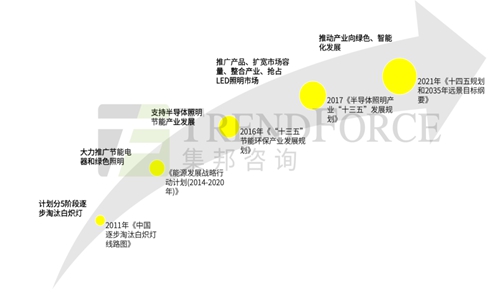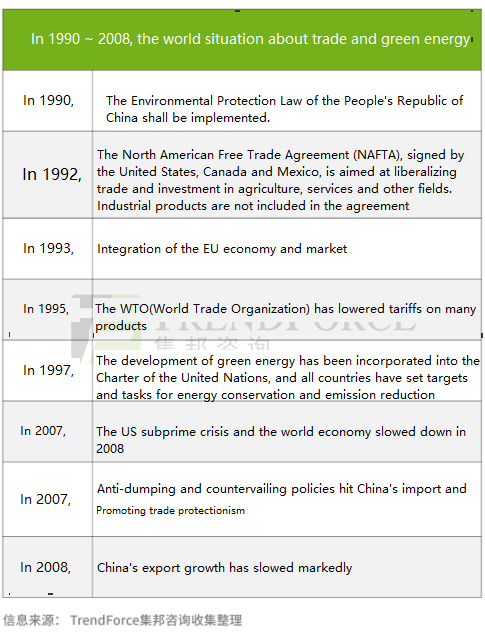2022-03-30
"Green lighting" was first proposed by the US Environmental Protection Agency (EPA) in 1991 to "launch a green lighting project" concept, and then immediately received the support of the United Nations and the attention of many countries, which led to the LED lighting competition.
Actively promoting the implementation of green lighting goals and engineering projects from the aspects of policy and technology is the main means for the country to promote the use of established goals.
In 2003, the British government encouraged the public to use LED lighting through the "Energy White Paper", and local lighting companies also actively participated in the research and development and production of LED lighting products. From 2000 to 2006, Europe launched the "Green Lighting Program", which eliminated high-energy-consuming products. The EU banned the use of high-wattage incandescent light bulbs from September 2009, and completely banned incandescent light bulbs in 2012. As early as 1997, the United States achieved energy savings of 7 billion kWh through green lighting projects, which were later incorporated into the "Energy Star" building energy efficiency program in 1998.
my country's "green lighting" from the start of the project to the setting of industry norms
China is the world's largest developing country and the world's second largest energy producer and consumer. With the continuous development of the economy, the consumption of energy has increased sharply. The rapid development of the power industry has led to insufficient power supply, such as the recent power outages in local areas, as well as new energy generation with low power efficiency, power abandonment, and power loss in power transmission. continue to exist over time. Therefore, promoting the technological development of the industrial chain and implementing efficient lighting is one of the main ways to improve the tense power supply shortage.
my country's green lighting "starts in the 8th Five-Year Plan, and starts in the 9th Five-Year Plan". In 1996, the "China Green Lighting Project Implementation Plan" was issued. The main purpose of this plan is to save energy and provide healthy lighting. At that time incandescent and high pressure sodium lamps still dominated the market. At that time, LED lighting was an emerging industry and was in the early stage of industrial development. At that time, LED packaging technology was mainly controlled by enterprises in Taiwan. Later, due to the characteristics of environmental protection, energy saving, high color rendering, and long life, LEDs were gradually accepted by the market, attracting more and more businesses to join the industry.
LED was used in the lighting industry around 2006, mainly replacing incandescent lamps and high-pressure sodium lamps with LED bulbs and street lamps. But what really makes LED lighting enter the rising period is the subsequent cost reduction, mainly due to the updated manufacturing of equipment and the automation of LED packaging technology to improve product quality and stability. The LED lamp beads have dropped from the earliest few dollars to a few cents or even a few cents, and many manufacturers can adopt different manufacturing solutions according to the use fields of different customers to promote the penetration of LED lighting into the civilian field. So far, it has been achieved Nearly 60%-70% replacement.
Before LED entered the mature stage, many small workshops of LED lighting appeared due to its low entry threshold. In terms of technology and manufacturing process, these small workshops pursue the same cost as large enterprises or even lower, so that the level of price does not represent the excellent quality, resulting in confusion in the LED lighting market. Then the country launched the 3C certification standard and the environmental protection policy of green lighting, which standardized the LED lighting industry and prompted enterprises to turn to the improvement of technology and equipment.
 Source of information: Collected by TrendForce Consulting
Source of information: Collected by TrendForce Consulting
"Green Lighting" in the Background of the Macro Era
Then from a macro perspective, there are four reasons for the introduction of "green lighting":
First, the continuous growth of population has led to the continuous increase of primary energy consumption; secondly, due to the different economic development of various countries, different energy consumption growth patterns have been created. As developed countries have entered a post-industrial society, their economies have shifted to an industrial structure with low energy consumption and high output. development, the growth rate of energy consumption is significantly lower than that of developing countries; third, the regional energy consumption structure is significantly different; finally, the uncontrollability of the epidemic and political reasons has increased the pressure on energy trade and transportation.
At the same time, the global climate change is becoming more and more serious, and the natural disasters caused by the climate are becoming more and more severe, and the people's awareness of environmental protection is also increasing day by day. As a result, a diversified, clean, efficient, globalized and market-oriented "green economy" has become a breakthrough to break the energy predicament.
One of the world's two continents lays the foundation for free trade and green lighting development
In the 1990s, a global trade pattern of two continents was formed. First, the free trade agreement between the primary and tertiary industries in North America led by the United States, followed by the integration of the European Union’s economic market, and finally the World Trade Organization (WTO) established.
After the formation of the three circles, the foundation of world free trade and the pattern of regional monopoly were formed. The "Kyoto Protocol" signed by various countries in 1997 further promoted the development goals and tasks of green lighting, and encouraged and supported the research and innovation of LED lighting technology.
In 2007, the subprime mortgage crisis and anti-dumping policy in the United States hit the lighting industry, which was just in the development stage, and caused a sharp drop in exports. However, Chinese lighting companies tried their best to introduce advanced equipment and R&D new technologies. From 2013 to 2016, the domestic replacement rate of LED chips increased, and the cost performance of small and medium power products was greatly improved, finally catching up with the second round of LED chips. As a result, China is gradually realizing the localization of the entire industry chain from OEM.
